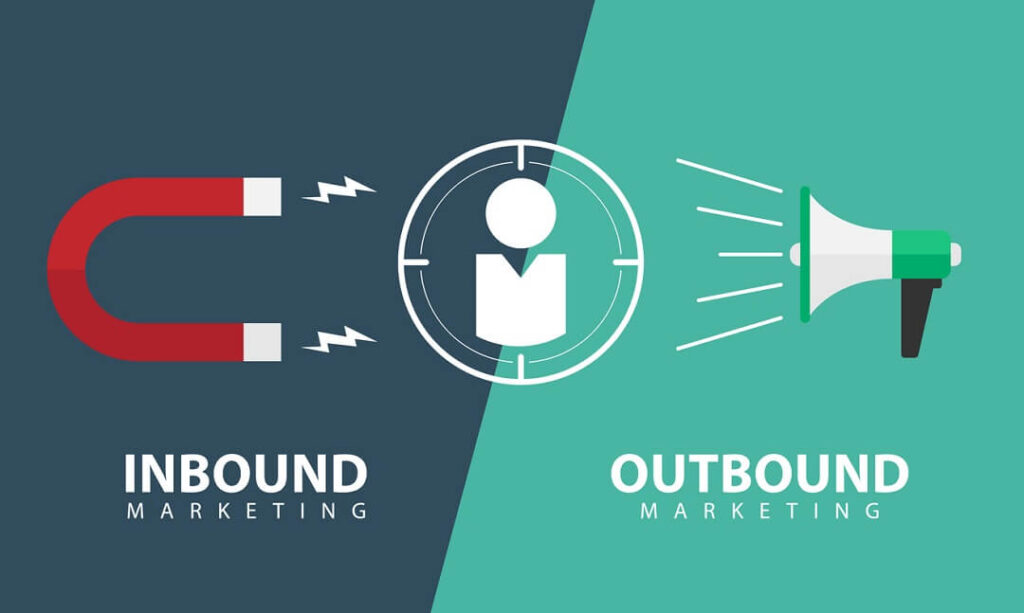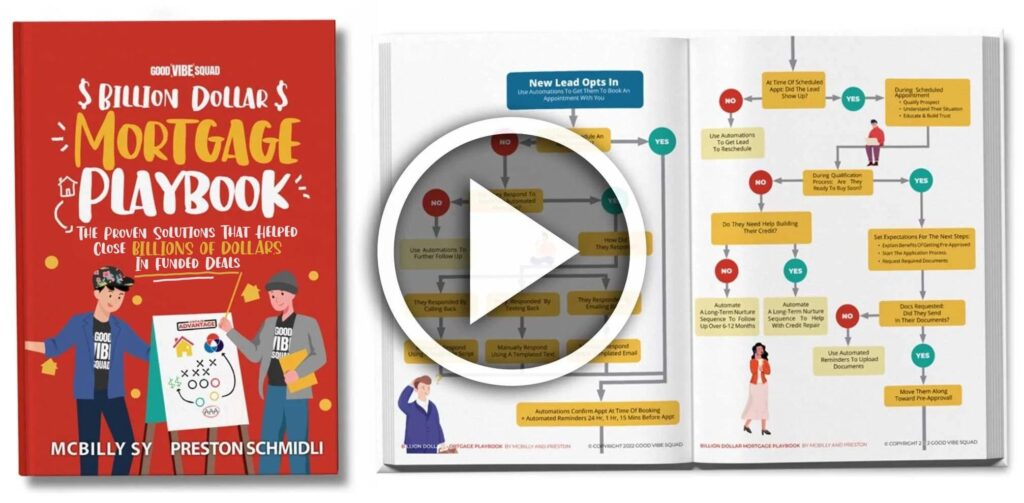Get Our Billion Dollar Mortgage Playbook
Get the proven strategies that helped close Billions of dollars in funded deals!
The landscape of the mortgage industry is constantly evolving, making it challenging for loan officers to keep up with effective marketing and closing strategies. A key pain point is balancing inbound and outbound mortgage marketing to bring in leads and convert them. This balance can be challenging, often leaving businesses feeling overwhelmed or unsure where to focus their efforts.
However, learning to balance the two separates successful mortgage professionals from those who struggle. Balancing inbound and outbound mortgage marketing strategies comes from diversifying your lead sources and implementing the right nurture campaigns, as discussed below.
Key Takeaways
- Inbound marketing offers cost-effective methods to attract potential clients. It leverages social media platforms, SEO techniques, and email campaigns for lead generation.
- Outbound marketing uses traditional approaches like direct mail campaigns and networking at real estate events to reach out to your target audience directly.
- The key is finding a balance between these two powerful strategies. It’s about using them in harmony rather than isolation that brings success in this competitive industry.
Inbound vs. outbound marketing in the mortgage industry
In the continuously transforming digital sphere, it is essential to comprehend and benefit from both inbound and outbound approaches. Using both strategies, mortgage marketers can reach potential customers early on their buying journey while providing value without expecting anything in return.
This approach allows mortgage professionals to establish connections with prospects early on in their buying journey by providing value before asking anything from them. It aims to attract a high volume of traffic and convert that into qualified leads – potential customers.
Differentiating between inbound and outbound strategies
The contrast between inbound versus outbound lies in the interaction with its target audience:
With an inbound strategy, prospective buyers find you naturally.
In an outbound strategy, marketers must go out and find their prospective buyers, often using traditional methods such as telemarketing, trade shows, print advertisements, billboards, etc. This latter method has been described as ‘more interruptive’ because it relies on getting someone’s attention whether they want it at that moment or not. Yet, despite being viewed by some as outdated compared to SEO or email campaigns, there’s no denying its effectiveness when done right, especially within industries like real estate where personal relationships still hold significant weight.
Making a choice: Inbound vs. Outbound
Your choice between adopting an inbound versus an outbound approach will largely depend upon factors specific to individual businesses, including budget, resources, time constraints, business model, market conditions, and customer preferences. However, regardless of which route you choose, it is important to remember that both approaches have a place in a successful overall mortgage marketing plan. Therefore, they should be together to maximize reach, engagement, conversion rates, and ultimately, bottom-line profits.

Inbound marketing strategies
In the mortgage industry, inbound marketing strategies have proven to be a game-changer in attracting qualified leads.
Social media marketing for mortgage brokers
One such powerful tool within this strategy spectrum is social media marketing. Platforms like Facebook offer invaluable opportunities to engage your target audience and share valuable content related directly or indirectly to real estate trends, mortgage services, etc.
One key component is Facebook ads. They allow you direct access to potential clients’ news feeds based on demographic information and online behavior patterns – making them highly targeted tools for generating quality leads.
Read More: Complete Guide to Mortgage Lead Generation on Social Media
Search Engine Optimization (SEO) to drive traffic
You need SEO or search engine optimization to attract more visitors from your target demographics. These are the ones that are actively looking up information related to mortgages. Optimizing your website can boost its visibility significantly.
Mortgage-related terms like “mortgage brokers,” “real estate loans,” and “housing market,” when used strategically, can increase the likelihood of appearing higher up in search results, thus driving traffic towards your services.
Optimizing a website or blog post using targeted keywords related directly to generate more qualified leads is a clear testament to why SEO should be considered a must-have tool within any robust mortgage broker’s toolkit.

Outbound marketing strategies
Outbound marketing strategies have been the cornerstone of the mortgage industry for years. Even with digital and inbound methods taking center stage recently, outbound tactics remain pivotal when generating leads for loan officers.
These proactive methodologies involve direct engagement with potential clients or referral partners instead of passively waiting for them to discover your content organically.
Let’s unpack some key outbound strategies like email marketing, direct mail campaigns, and networking that are still relevant today.
Email marketing for lead generation
Email marketing emerges as another cornerstone of an effective outbound mortgage marketing strategy allowing professionals to reach out directly to potential clients with personalized communications tailored around their needs and interests.
Direct mail campaigns
In this age where everything is becoming digitized rapidly, you might wonder about the effectiveness of direct mail campaigns. These can still be extremely impactful if done right. The personalized touch that physical mails bring can make a significant difference amidst countless online ads and emails consumers receive daily.
A well-crafted piece of direct mail offering valuable insights into your services could pique interest just when homeowners are contemplating refinancing their mortgage or buying a new property. Tailoring these messages based on specific demographics within your target audience further enhances their impact.
This strategy should not replace but rather complement digital efforts, forming part of an integrated approach where each method reinforces others capturing attention from various angles.
Networking at real estate events
Making connections face-to-face through networking opportunities offers unique advantages over purely online interactions. It allows deeper conversations fostering trust quickly between the parties involved.
Such relationships become particularly important in industries like ours where decisions carry substantial financial implications for clients. Thus, they prefer working with people they know personally or via trusted recommendations whenever possible.
- Potential Clients: Attending local gatherings provides access to potential customers who may need assistance navigating complex aspects related to housing market transactions, including mortgage loan origination processes, etc., which makes an excellent opportunity to generate qualified leads.
- Educational Opportunities: By attending seminars, workshops, and conferences, gain knowledge of the latest trends impacting the sector, thereby enhancing the ability to provide effective solutions to prospective clientele while simultaneously positioning yourself as a thought leader in the space.
- New Business Partnerships: Such platforms offer a chance to meet other professionals in the field (real estate agents, appraisers, attorneys, and so forth) who serve as beneficial referral partners in the future, bringing more business your way.
Remember always to follow up after any event, whether by email or phone call, to keep top-of-mind among those you met there and reinforce the bonds established during the initial encounters.
And lastly, remember that embracing modern trends is crucial, given the rapid evolution of the landscape. It doesn’t mean abandoning time-tested ones entirely, as they still have much to offer when used strategically alongside newer ones.
Balancing inbound and outbound techniques
A balanced approach often yields the most effective results. Let’s explore how you can integrate these two strategies for maximum impact.
An optimal mortgage marketing strategy doesn’t favor one technique over another but integrates them seamlessly into a cohesive plan where each complements the other’s strengths.
For instance, a combination approach could involve direct mailers (outbound) directing recipients back to website landing pages (inbound). This interaction loop bridges offline and online touchpoints leading prospects further down conversion funnels.
Remember though: no two markets are identical, so testing different combinations will help identify what mix yields the best results specifically for you.
Lastly, keep yourself updated with the latest trends and keep sight of proven conventional methods because staying adaptable is critical given how quickly things evolve, especially within today’s dynamic digital landscapes.
Meet the #1 Lender-Preferred Marketing Solution on the Market Right Now
Finding the right balance between inbound and outbound mortgage marketing is crucial for success in the ever-changing mortgage industry landscape.
Integrating both strategies into a cohesive plan, rather than relying on one in isolation, maximizes reach, engagement, and conversion rates. By embracing modern trends while strategically leveraging time-tested methods, mortgage professionals can establish meaningful connections with prospects early in their buying journey and ultimately drive bottom-line profits.
If all this seems overwhelming or you’re looking for more guidance on utilizing inbound and outbound mortgage marketing for your business, Good Vibe Squad has your back!
We offer comprehensive mortgage lead generation services designed specifically for loan officers who want to take control over their mortgage marketing endeavors.
Don’t let complexity deter growth. Schedule a call today!







